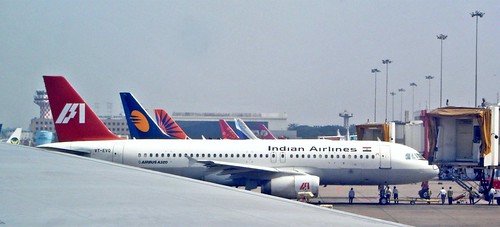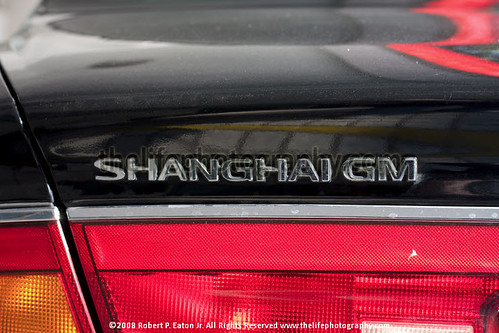(Source: Times of India)

Taking a leaf out of employees’ labour union books, private airlines on Friday threatened to suspend domestic operations on August 18 if the government did not give in to their demand for a bailout package in the form of lower sales tax on fuel and airporttaxes. Never before has an entire industry threatened to pull out from the market to arm-twist the government into buying its line.
“The airline industry realizes its role in the life of the nation. But in view of the indifference shown by the government, it may not be able to continue its operations… and so we have decided not to operate nationwide services on August 18,” Anil Baijal, secretary general of the Federation of Indian Airlines, the lobby group of airlines in India, announced at the Jet Airways office in Mumbai. “The idea is to highlight the urgency for the government to intervene urgently. If, however, an adequate response is not received, member airlines will be compelled to suspend their services for an indefinite period.” Baijal did not spell out the nature of the response or the level of commitment the airlines are expecting from the government in the next 18 days.
The no-fly decision was taken following an afternoon meeting attended by Jet Airways’ Naresh Goyal, Kingfisher Airlines’ Vijay Mallya and other members of FIA except those from Air India and Paramount Airways. Following the meeting, Baijal read out a statement to the media which began with the financial difficulties faced by the industry. The total losses incurred by the Indian airline industry in 2008-09 are estimated to be Rs 10,000 crore, he said, listing ATF sales tax, airport charges, depreciation in the value of India rupee, the economic meltdown and terrorists attacks as contributory factors.
Sudhakara Reddy, president, Air Passengers Association of India, a consumer rights organization, was scathing. “The losses are of their own making,” he said. “The two big airlines, Jet and Kingfisher, bought loss-making airlines like Air Deccan and Air Sahara. The government, on the other hand, gave airlines benefits like a credit period for payment to oil companies and airports. Then again, IndiGo and Spice Jet made a profit in the last quarter, which means there is a turnaround in the industry. When they make a profit, do they share it with the government or public?”
Although the relationship between governments and airline operators worldwide has never been an easy one, the threat by Indian private airlines is a first in the century-old history of the global airline industry. If it is indeed carried out, it will mean cancellation of about 12,000 domestic flights by airlines such as Kingfisher, Kingfisher Red, Jet Airways, Jetlite, IndiGo, Go Air and Spice Jet on August 18. The only option for the domestic air traveller will be the 300 scheduled flights operated by Air India and the additional ones it may mount to meet the demand.
Civil Aviation Minister Praful Patel on Sturday said that the government would not bailout private airlines. Patel advised the private carriers to withdraw their strike call on August 18. He stated, “Passengers interest would be safeguarded and DGCA would take action if needed.”
Air India will increase the number of flights to reduce inconvenience to passengers, Mr Patel said. It is not known if Paramount Airways will join its private sector peers in the strike.
The minister said that the ATF tax was an issue even before the private carriers started operations. Painting a desperate picture of their situation, industry lobby body Federation of Indian Airlines (FIA) said unless the government helps them by lowering taxes on jet fuel and bringing down airport charges, their survival is in doubt.
Click here to read the entire article.
TransportGooru Musings: I can understand the plight of the airline operators in India, a country where rulers take a serious view of situations only when such harsh measures are called for. As a proud practitioner of Democracy, the country has developed a unique way of making its rulers listen – Indefinite Strike. Though this method has often been abused by many labor unions, especially the ones associated with employees of public sector banks & railways, this is the first time an entire industry is threatening to go on strike. During my recent trip to India, me and my family flew on some of the domestic carriers mentioned here. Though the original price of the tickets were really enticing, the additional costs for a ticket incurred by a passenger were often sky high.
For example, the price for two tickets from Coimbatore to Chennai (two Southern Indian cities) was Rs.1598 (roughly $35). But the invoice showed a shocking total of Rs.5638, with a line stating “Other Charges” worth Rs.4,391.44 (~$80). I am assuming that this “Other Charges” line envelops all the above mentioned items that the airline operators are fighting to remove. If the airlines managed to achieve this, the cost of flying should become really cheap and would fuel a boom in traffic. These sky high tariffs did really make me re-examine whether it is worth flying and given that the next best alternative is the Indian Railways, which takes six times longer to get me to the same desitination, I went ahead and paid for the ticket inspite of the heart-ache.
Here I’dlike to share an interesting story. My family hired this young driver, Suresh, to drive me around during this recent trip. I spent a considerable amount of time with him in the car as he drove me around for nearly 2000 kms in a period of 20 days. Sitting in traffic and during long stretches of driving (while I am not on the phone or sleeping), we asked a lot of questions about how it is to be living in our respective worlds (America & India) and shared stories about driving and the multitude of transportation problems we faced in our daily lives. He was so fascinated by the idea of flying between cities in such short times compared to the trains. When I asked him if he had ever flown in an airplane before, he said in a longing voice that he has never been inside an airport all his life (24years of age) and has always wanted to fly but never could afford a ticket due to his financial siuation. He added that he always wanted to save money to buy a ticket to the nearest destination possible but was not sure how expensive it could be to fly compared to the buses or trains . When he picked me up at the airport, he inquired about how much I paid for the trip and I promptly shared the information. He was sorta disappointed and said may be he will never get to fly if the prices were to be so high. He said that flying will never become a reality for many people like him.
It got me thinking. How is that a driver in India cannot afford to fly while someone holding the same job can do so in a country like America? Here we have people like Suresh who are ready to fly but can’t afford to do so. There is a huge market that remains untapped and the private airline operators are definitely ready and willing to feast on this bonanza. If the economics are worked out properly, this could be a wonderful way to resuscitate the ailing aviation industry. I am no economist but it is not hard to understand what we are dealing with. It is as simple as this: There is a Huge Market, there are a number of willing operators, and a thriving industry that is raring to do everything possible to remain profitable. With growth in passenger traffic, the Government can compensate for the loss of revenue experienced by the reduction in tariffs. Moderizing the airport infrastructure and streamlining the current services can also help India’s aviation industry to a large degree.
But the only stumbling block that remains is some of the regressive policies of the Government, which is holding back the dreams of soaring high for people like Suresh. As a Transportation industry practitioner, I’d love to see the Ministry of Aviation taking a hard look at this issue and bring down some of these ridiculous charges. Failing to do that would pretty much doom the industry and would prohibit the development of the aviation infrastructure, which the country needs to develop so badly. Mr. Praful Patel, are you listening?
With all that said, I totally agree with Sudhakara Reddy, president, Air Passengers Association of India. Airline operators have goofed up tremendously in the past with their bad business moves (some of the horrible mergers and acquisitions are top among them) and can’t go penalizing the passengers like this. It violates the obligation they have for serving the general public who put their faith in these airlines when they made travel plans. For the airlines, it is their right to go on strike but that can’t come at the expense of the passengers. It is a huge discomfort for the very passengers who keep these airlines in business. It is the worst form of customer service. Hope the issue gets resolved amicably.












